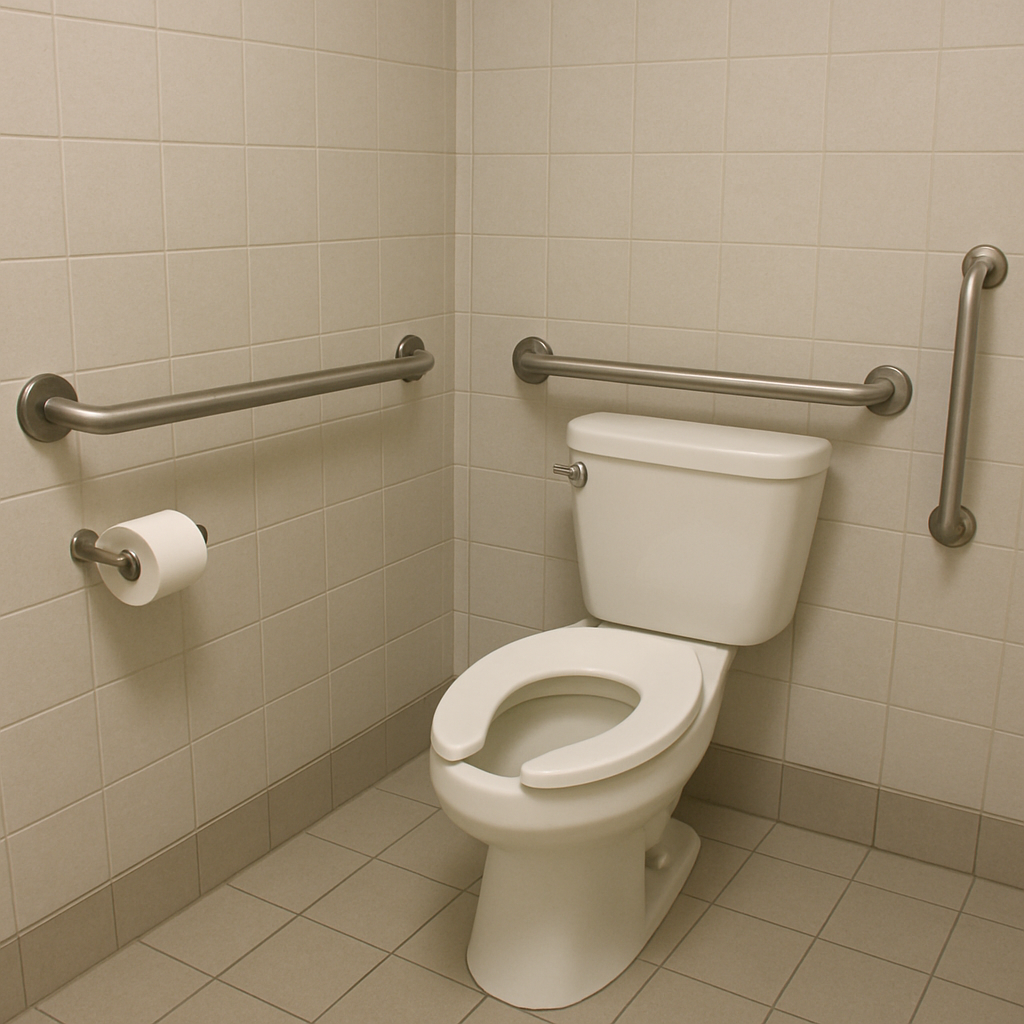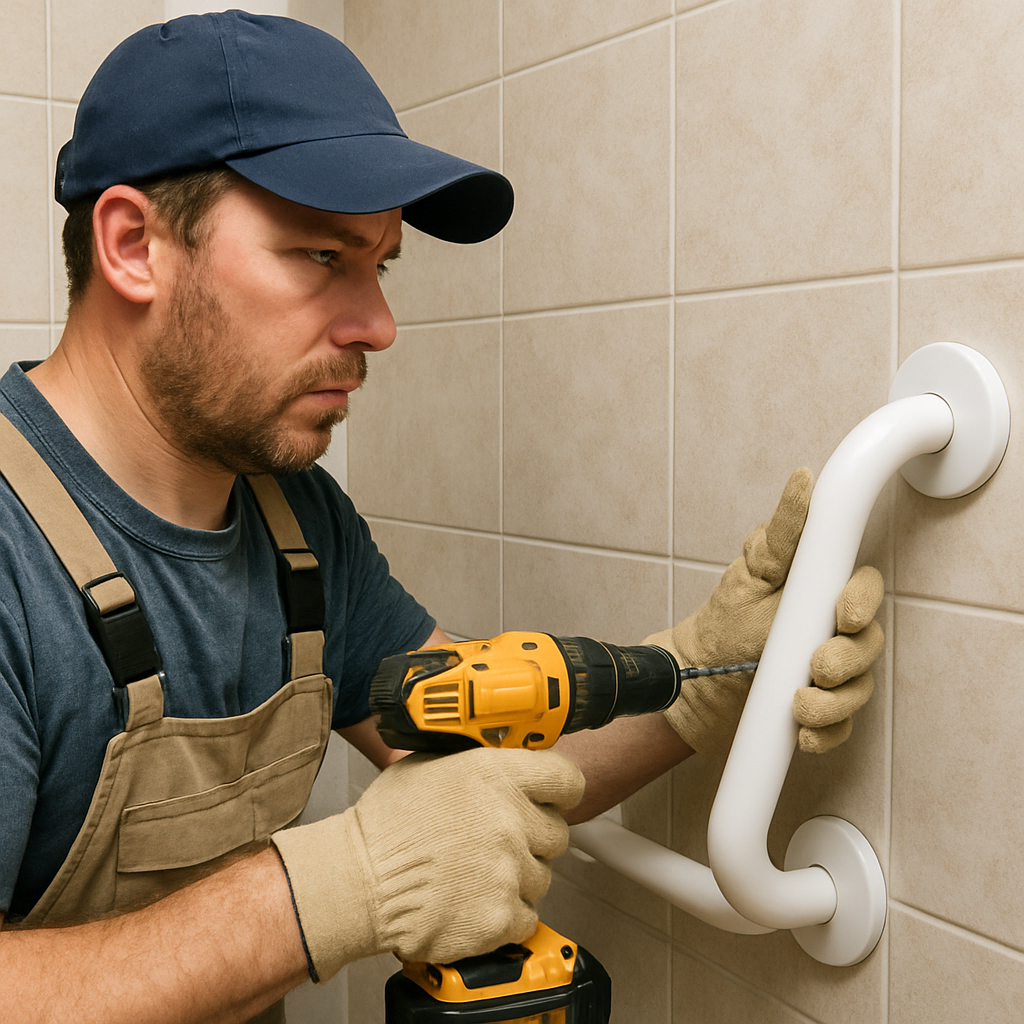 Service Hotline:13510328459
Service Hotline:13510328459
 205-206, 2nd Floor, Building 2, Xiazao Village Industrial Zone, Gaofeng Community, Dalang Street, Longhua District, Shenzhen City
205-206, 2nd Floor, Building 2, Xiazao Village Industrial Zone, Gaofeng Community, Dalang Street, Longhua District, Shenzhen City
 Service Hotline:13510328459
Service Hotline:13510328459
 205-206, 2nd Floor, Building 2, Xiazao Village Industrial Zone, Gaofeng Community, Dalang Street, Longhua District, Shenzhen City
205-206, 2nd Floor, Building 2, Xiazao Village Industrial Zone, Gaofeng Community, Dalang Street, Longhua District, Shenzhen City
Time:2025-09-10 Preview:
Creating a safe and accessible bathroom environment is crucial for individuals with disabilities. One essential component in achieving this is the installation of specialized handrails, also known as grab bars. These handrails provide the necessary support and stability for disabled individuals, ensuring their safety and independence in the bathroom. In this article, we will explore the importance of disabled bathroom handrails, how to install them effectively, and the different types available to suit various needs.
Disabled bathroom handrails are not just a convenience; they are a necessity for individuals with limited mobility. These handrails serve as a crucial aid in maintaining balance and preventing falls, which are common in bathroom settings due to slippery surfaces. For many disabled individuals, grab bars offer a sense of security and empower them to use the bathroom independently without the constant need for assistance.
The primary function of a grab bar is to enhance safety by providing a sturdy support system. With well-placed handrails, individuals can confidently maneuver in and out of the shower or bathtub, sit and rise from the toilet with ease, and navigate the bathroom space safely. This level of support significantly reduces the risk of accidents and injuries, giving disabled individuals greater independence in their daily routines.
In many regions, there are specific accessibility standards and building codes that dictate the installation of grab bars in bathrooms, especially in public and commercial spaces. These regulations ensure that facilities are accessible to everyone, regardless of their physical abilities. By installing disabled bathroom handrails, you not only comply with these standards but also create an inclusive and welcoming environment for all users.

Proper installation of grab bars is essential to ensure their effectiveness and safety. Here are some key steps to consider when installing handicap grab bars:
Before installation, assess the bathroom layout to determine the optimal locations for grab bars. Consider the specific needs of the user and identify areas where support is most needed, such as near the toilet, shower, or bathtub. It is important to ensure that the handrails are within easy reach and positioned at the appropriate height for the user.
There are various types of grab bars available, each designed to meet different needs and preferences. Some common types include:
Straight Grab Bars: These are the most common and versatile type, suitable for most areas in the bathroom.
Angled Grab Bars: Ideal for corner installations, providing additional support when transitioning between different bathroom fixtures.
Flip-Up Grab Bars: These bars can be folded up when not in use, making them a space-saving option for smaller bathrooms.
Choose the type that best suits the bathroom layout and the user's requirements.
When installing grab bars, it is crucial to ensure they are securely anchored to the wall. Use appropriate wall anchors and fasteners to guarantee stability and support. If possible, attach the grab bars to wall studs for maximum strength. Follow the manufacturer's instructions carefully and, if necessary, consult a professional to ensure proper installation.

Understanding the different types of grab bars available can help you make informed decisions when selecting the right handrails for your bathroom. Here are some additional options to consider:
Textured grip grab bars feature a non-slip surface, providing extra grip and reducing the risk of slipping, even when wet. These are particularly beneficial in shower areas where surfaces can become slippery.
Suction cup grab bars offer a temporary and portable solution, making them ideal for travel or short-term use. However, they are not recommended for permanent installation as they may not provide the same level of stability as wall-mounted grab bars.
For those with specific needs or unique bathroom layouts, custom grab bars can be designed and manufactured to fit perfectly. Customization allows for precise placement and tailored support, ensuring maximum safety and comfort.

Once installed, it is important to regularly inspect and maintain the grab bars to ensure their continued effectiveness. Check for any signs of wear or damage, such as loose fittings or rust, and address any issues promptly. Regular cleaning with mild soap and water will help maintain their appearance and functionality.
Disabled bathroom handrails play a vital role in creating a safe and accessible bathroom environment for individuals with disabilities. By providing essential support and stability, these grab bars enhance safety, promote independence, and ensure compliance with accessibility standards. Proper assessment, selection, and installation of grab bars tailored to the user's needs are crucial steps in maximizing their benefits. Whether you are retrofitting a home bathroom or designing a public facility, investing in high-quality disabled bathroom handrails is a step towards inclusivity and safety for all users.
